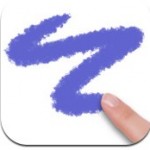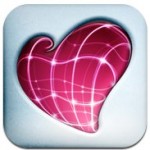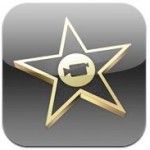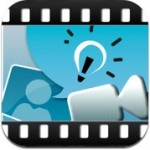How Does iPad Workflow Fluency Look in Kindergarten

Recently, I tried to explain to a teacher from another school how we are trying to use iPads BEYOND apps. We have over 100 apps on our school iPads and introduce our students according to age level to a variety of them, but the focus of the use of the devices NEEDS to remain primarily as a tool for:
- exposing students to skills, characteristic of a “modern learner“
- critical thinking
- personal learning
- transformative learning
- workflow fluency
- anytime/anywhere/anyhow
- creating
There is nothing wrong with using apps for isolated skills practice, such as multiplication, spelling, memorization, taking digitized quizzes or substituting otherwise traditional analog activities. These purposes should not be the only reasons of using iPads though. As students are being exposed to different apps, the focus needs to remain on the purpose, creation, workflow and sharing of what they can “do”with the iPads. They should “do” what they could not conceive or accomplish without them before.
I have shared last week, how our first graders are showing first signs of fluency when working with the tools at their disposal. How do we approach the workflow fluency with Kindergarten students?
We chose four apps (Doodle Buddy, Skitch, iMovie, ExplainEverything) to introduce our 5 and 6 year olds to the workflow:
import>create>save>share

- Students listened to a story (about dinosaurs and Hanukkah) without seeing the illustrations in the book
- in Doodle Buddy, they visualized the story by drawing the imaginary images in their heads.
- they saved the images in the photo album
- emailed the images to their teacher (to be inserted into student blogfolio under categories: Art, Writing)

- We started out by having students use Skitch to take a picture of themselves (some of them asked a buddy to take it for them, which they then reciprocated)
- by using the pen tool, they chose a color and then wrote their name on the image
- from Skitch, their “annotated” images were emailed to the teacher (to be inserted into student blogfolio- Category: Kindergarten, Me, writing samples)

- Using iMovie students created a new project
- recorded a buddy telling them about their “favorite part of Kindergarten”.
- they played the movie back, re0recording if necessary until the movie clip was to their satisfaction
- students saved and named their project
- the movie was sent to a school vimeo account (to be embedded into student blogfolio- Category: Kindergarten, Me, Oral Language)

- The Kindergarten teacher set up scenarios and took photos in the classroom, demonstrating the Math concept of “fewer, more, equal”.
- the images ( different scenarios with different groups of children) were emailed to each iPad and saved in the Photo Album
- students looked at each image and chose the scenario, they wanted to “explain” (all students chose an image they were part of!)
- using Explain Everything, they then imported the image
- chose the pen tool and color
- recorded, paused, and drew their explanation
- the project was saved and mailed to teacher to be uploaded to classroom vimeo account (to be included in student blogfolio under Categories: Kindergarten, Math, Oral Language)
As we were using the above apps, we continue to ask and reflect:
- How is the app used to directly support curriculum content?
- How are we allowing students to demonstrate evidence of their learning in this moment in time?
- How are we/they documenting their learning process?
- How do we provide opportunities for students to think about and reflect on their own learning?
- What skills of a “modern learner” are we exposing our students to and how are we supporting the development of new literacies?
What are some of the workflows your students are becoming fluent in? How are you connecting skills and literacies of a modern learner to transforming activities in the classroom?
Tools and ideas to transform education. Sign up below.
cross-posted on langwitches.org/blog
Silvia Rosenthal Tolisano has worked as a World Language teacher, Technology Integration Facilitator and 21st Century Learning Specialist and is available for national and international conference presentations, consultations, and teacher training sessions. She is able to present in English, Spanish and German. Visit Globally Connected Learning for sample topics. Silvia blogs at langwitches.org/blog.
